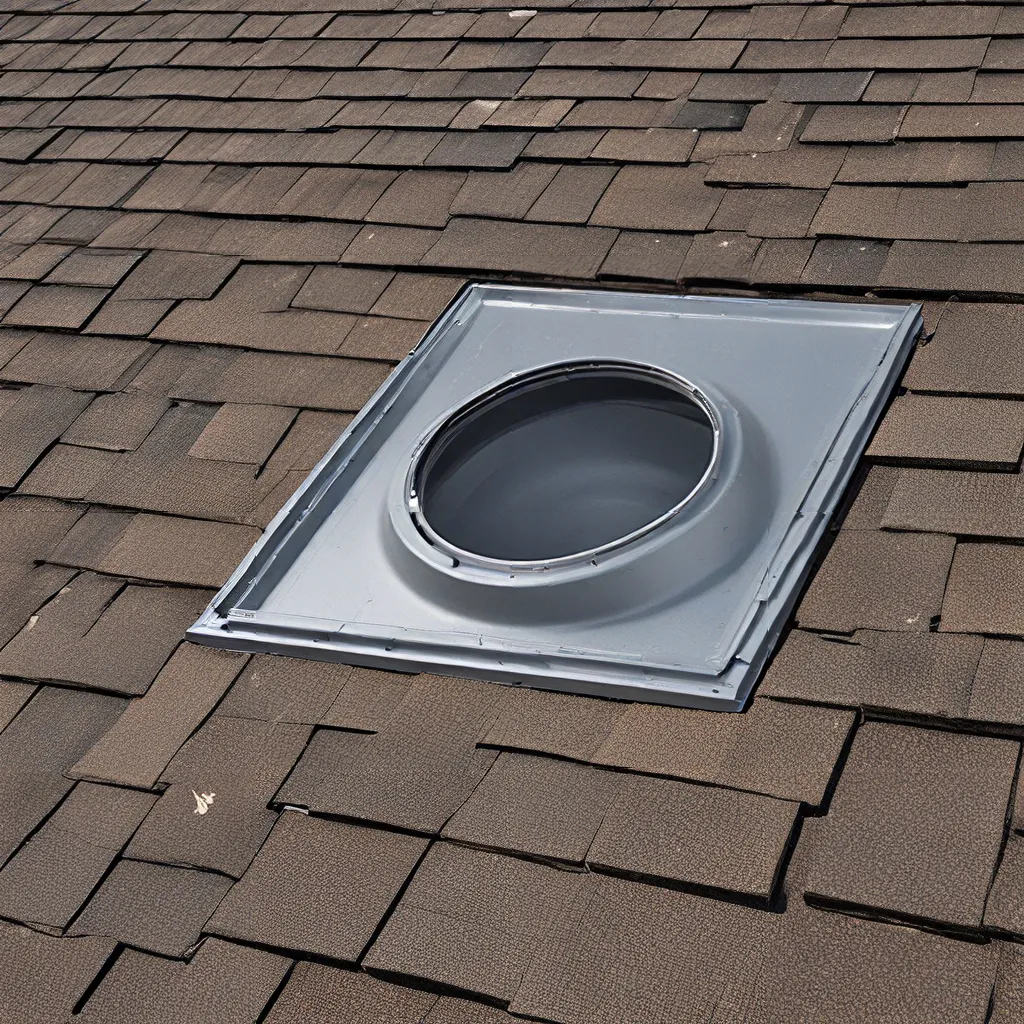
The Hidden Culprit Behind Stuffy Homes
Have you ever stepped into your home and felt like you were trapped in a sauna? That stale, heavy air that just clings to your skin – ugh, it’s the worst! Well, my friend, the likely culprit behind this uncomfortable and potentially unhealthy scenario might just be your roof ventilation (or lack thereof).
You see, proper roof ventilation is the unsung hero of indoor air quality. It’s the invisible force that keeps your home feeling fresh, your energy bills in check, and your family breathing easy. But alas, many homeowners overlook this critical component, and that’s where the problems start to brew.
In this in-depth exploration, we’ll dive into the secrets of roof ventilation and uncover how it holds the key to creating a healthier, more comfortable living space. So, buckle up – it’s about to get breezy!
The Science Behind Roof Ventilation
Let’s start with the basics. Roof ventilation is the process of allowing air to circulate in and out of your attic or roof space. This airflow serves a crucial purpose: it helps regulate the temperature and humidity levels in your home.
Picture your attic as the engine room of your house. As the sun beats down on your roof, it generates heat that wants to seep into your living spaces. If that heat has no way to escape, it gets trapped, causing your air conditioning to work overtime and your energy bills to skyrocket. Just like a car without proper ventilation, a home with inadequate roof venting can quickly become a stuffy, uncomfortable sauna.
But it’s not just about temperature control. Roof ventilation also plays a vital role in regulating moisture levels. As warm, moist air rises from your living spaces, it can condense in the attic, leading to the dreaded enemy of every homeowner – mold. By allowing this humid air to escape, you can prevent the growth of mold and mildew, which can not only compromise the structural integrity of your home but also pose serious health risks.
The Benefits of Proper Roof Ventilation
Now that we’ve got the science out of the way, let’s talk about the real-world benefits of having a well-ventilated roof. Trust me, the payoff is well worth the investment.
Energy Efficiency: As we mentioned, a properly ventilated attic can significantly reduce the burden on your HVAC system. By keeping the air temperature and humidity in check, you’ll see a noticeable drop in your energy bills, helping you save money month after month.
Structural Integrity: Excess heat and moisture can wreak havoc on the structural components of your roof, leading to premature aging, warping, and even the dreaded collapse. Proper ventilation helps preserve the integrity of your roof, extending its lifespan and saving you from costly repairs down the line.
Improved Indoor Air Quality: When warm, humid air is allowed to escape through roof vents, it takes with it all the pollutants, allergens, and undesirable odors that can make your home feel stuffy and unhealthy. This, in turn, creates a more comfortable and breathable living environment for you and your family.
Longer-Lasting Roof: Proper ventilation can also help extend the life of your roof itself. By preventing the buildup of heat and moisture, you can avoid the premature deterioration of your roofing materials, potentially saving you thousands in replacement costs.
Reduced Fire Risk: In some cases, poor roof ventilation can even increase the risk of fire. When hot air gets trapped in the attic, it can lead to the overheating of electrical wiring and other components, potentially sparking a blaze. Adequate ventilation helps mitigate this hazard.
The Anatomy of a Well-Ventilated Roof
Now that we’ve covered the why, let’s dive into the how. Achieving optimal roof ventilation is all about striking the right balance between intake and exhaust.
The key components of a well-ventilated roof system include:
Soffit Vents: These are the vents located along the underside of your roof’s eaves, responsible for allowing fresh air to be drawn into the attic space.
Ridge Vents: Positioned along the highest point of your roof, these vents allow hot, humid air to escape, creating a continuous airflow.
Gable Vents: These are the triangular vents located on the exterior walls of your home, near the peak of the roof. They can also help facilitate air circulation.
Attic Fans: In some cases, a powered attic fan can be installed to actively pull hot air out of the attic, further enhancing the ventilation system.
The optimal placement and size of these vents will depend on the specific design and dimensions of your home. As a general rule of thumb, you’ll want to have 1 square foot of net free vent area for every 300 square feet of attic floor space. But the devil is in the details, so it’s always best to consult with a professional to ensure your roof ventilation system is perfectly balanced.
Troubleshooting Common Roof Ventilation Issues
Now, I know what you’re thinking: “But what if my roof ventilation isn’t up to par?” No need to fret, my friend. There are ways to identify and address common ventilation problems.
Signs of Inadequate Ventilation:
– Excessive heat buildup in the attic
– Increased moisture levels and potential mold growth
– Ice dams forming on the roof during winter
– Higher energy bills due to HVAC system overwork
If you’re experiencing any of these issues, it’s time to take a closer look at your roof ventilation. Start by conducting a thorough inspection, checking for blocked or obstructed vents, insufficient vent placement, or any other factors that might be hindering airflow.
Once you’ve identified the problem areas, you can work with a professional roofing contractor to install additional vents, upgrade your existing system, or even explore more advanced ventilation solutions like solar-powered attic fans. The key is to find the right balance and ensure your roof is working in harmony with the rest of your home.
Keeping Your Cool: Other Roof Ventilation Considerations
While the core principles of roof ventilation remain the same, there are a few additional factors to consider when ensuring optimal indoor air quality.
Climate Considerations: Depending on where you live, your roof ventilation needs may vary. For example, homes in hot, humid climates may require more robust ventilation systems to combat the constant battle against heat and moisture. On the other hand, homes in colder regions might need to focus more on preventing heat loss through the roof.
Roof Design: The shape and pitch of your roof can also play a role in determining the most effective ventilation strategy. Steep-pitched roofs, for instance, may benefit from additional gable vents to facilitate better airflow.
Insulation: Proper insulation is the perfect sidekick to a well-ventilated roof. By keeping the heat and moisture at bay, insulation helps maintain a comfortable indoor environment, further reducing the strain on your HVAC system.
Professional Guidance: Let’s face it, roof ventilation is a complex topic, and getting it right can make all the difference in the comfort and longevity of your home. That’s why it’s always a good idea to consult with a reputable roofing contractor or HVAC specialist to ensure your ventilation system is optimized for your specific needs.
Unlocking the Secrets to Healthier Homes
There you have it, folks – the secrets to roof ventilation and the crucial role it plays in maintaining optimal indoor air quality. By understanding the science behind it and implementing the right solutions, you can transform your home from a stuffy, uncomfortable space to a refreshing oasis of clean, circulating air.
So, what are you waiting for? Head on over to our website and let’s get started on your journey to a healthier, more efficient home. Your future self (and your energy bills) will thank you!
